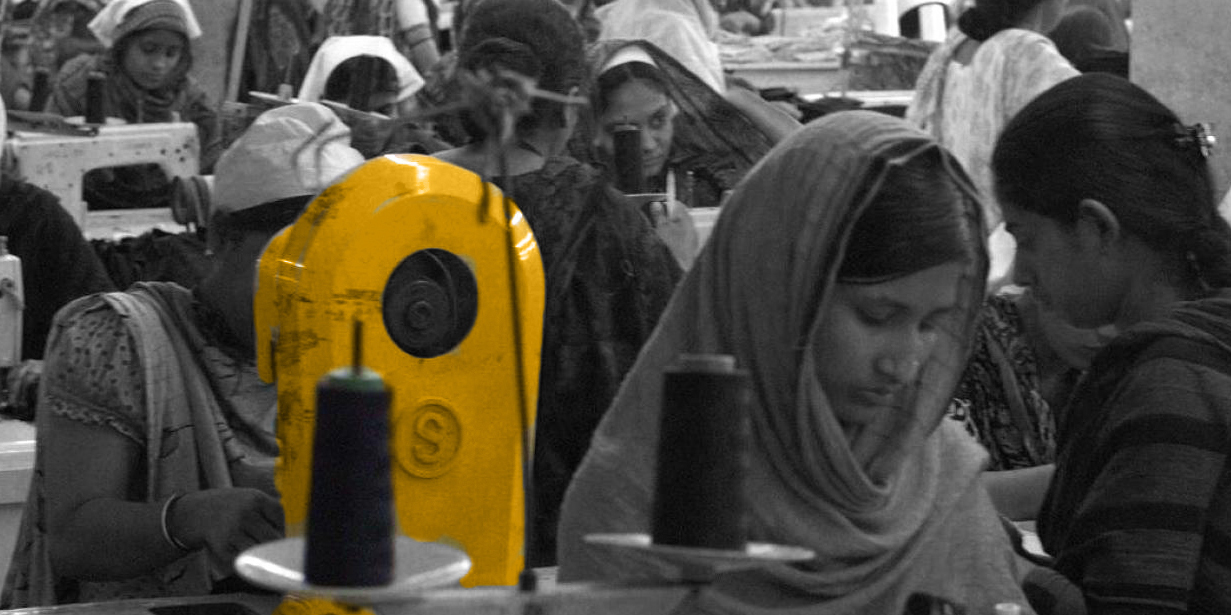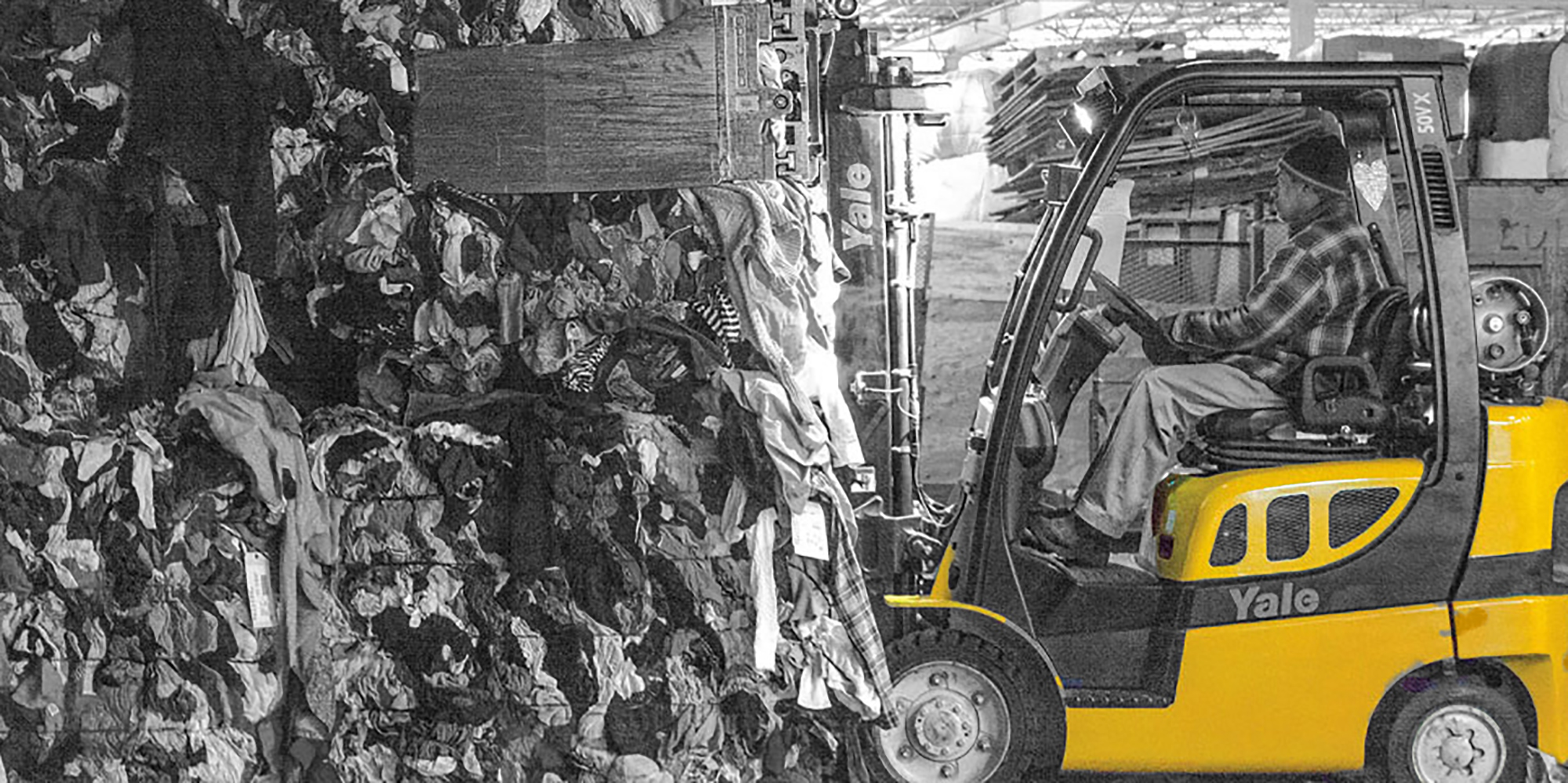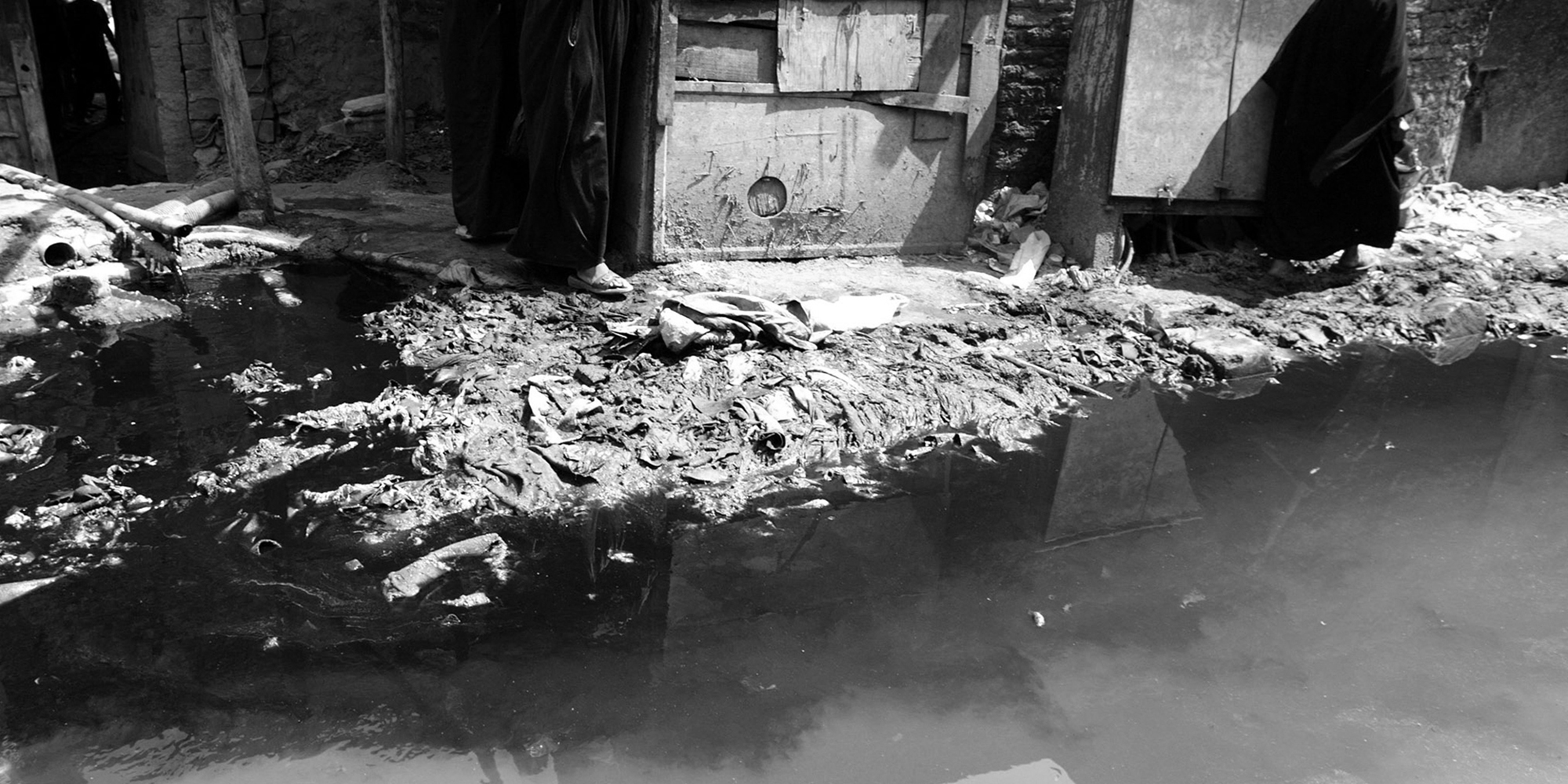
Articles

New study shows fast fashion continues to risk garment workers' health and well-being
On the 24th November 2012, a fire in the Tazreen Fashions factory in Bangladesh led to the death of at least 112 workers, while the collapse of the Rana Plaza building just five months later killed 1,134 garment workers and injured hundreds of survivors. Now, five years on, new research conducted by academics at the University of Sussex shows that despite some improvements, 'fast fashion' is still putting the health and well-being of garment workers at risk.
Dr Geert De Neve, Professor of Anthropology at the University of Sussex, says: "Improvements have been made since the Tazreen and Rana Plaza disasters. The 2013 Accord on Fire and Building Safety in Bangladesh, a safety pact signed by global unions and more than 200 brands (including Primark and Marks and Spencer), took important steps towards making global apparel companies accountable for the safety of factories in their supply chains.
"But these initiatives haven't gone far enough. Codes of conduct narrowly focus on building safety and physical infrastructure with a bias towards what can be seen and audited. Not only has the poor implementation of these codes allowed building fires and collapses to continue, but they still ignore the ways in which the health and well-being of workers is threatened on a day-to-day basis."
Dr Rebecca Prentice, Senior Lecturer in Anthropology at the University of Sussex, says: "Long working hours, physical exhaustion, intense work rhythms, harassment, and an absence of representation are all issues that remain 'invisible'. Research conducted at a Bangladeshi knitwear factory resulted in a long list of everyday health threats: from dust and smoke inhalation, noise, lack of ventilation, musculoskeletal pain, stress, and exposure to lights, electric wires, and chemical adhesives.
"Research from the Delhi capital region similarly reported a 10-12 hour working day as standard for 67% of workers employed in informal workshops, with 39% of all workers suffering from eye strain and 41% from exhaustion. "Workers are having to make a trade-off between earning a living and caring for their health. The 'fast fashion' industry must realise that workers' health is more than just the absence of injury; people's well-being encompasses physical, social, and mental dimensions that are threatened by the conditions they are working in."Dr De Neve continued: "The future well-being of garment workers around the world relies on the 'fast fashion' industry realising that it has a responsibility to these people's health and wellbeing that extends well beyond the structural safety of the buildings they work in."

FAST FASHION IS CREATING AN ENVIRONMENTAL CRISIS
Despite these ugly statistics, Americans are blithely trashing more clothes than ever. In less than 20 years, the volume of clothing Americans toss each year has doubled from 7 million to 14 million tons, or an astounding 80 pounds per person. The EPA estimates that diverting all of those often-toxic trashed textiles into a recycling program would be the environmental equivalent of taking 7.3 million cars and their carbon dioxide emissions off the road.
Visitors who stepped into fashion retailer H&M’s showroom in New York City on April 4, 2016, were confronted by a pile of cast-off clothing reaching to the ceiling. A T.S. Eliot quote stenciled on the wall (“In my end is my beginning”) gave the showroom the air of an art gallery or museum. In the next room, reporters and fashion bloggers sipped wine while studying the half-dozen mannequins wearing bespoke creations pieced together from old jeans, patches of jackets and cut-up blouses. This cocktail party was to celebrate the launch of H&M’s most recent Conscious Collection. The actress Olivia Wilde, spokeswoman and model for H&M’s forays into sustainable fashion, was there wearing a new dress from the line. But the fast-fashion giant, which has almost 4,000 stores worldwide and earned over $25 billion in sales in 2015, wanted participants to also take notice of its latest initiative: getting customers to recycle their clothes. Or, rather, convincing them to bring in their old clothes (from any brand) and put them in bins in H&M’s stores worldwide. “H&M will recycle them and create new textile fibre, and in return you get vouchers to use at H&M. Everybody wins!” H&M said on its blog.It’s a nice sentiment, but it’s a gross oversimplification. Only 0.1 percent of all clothing collected by charities and take-back programs is recycled into new textile fiber, according to H&M’s development sustainability manager, Henrik Lampa, who was at the cocktail party answering questions from the press. And despite the impressive amount of marketing dollars the company pumped into World Recycle Week to promote the idea of recycling clothes—including the funding of a music video by M.I.A.—what H&M is doing is nothing special. Its salvaged clothing goes through almost the exact same process as garments donated to, say, Goodwill, or really anywhere else.
Picture yourself with a trash bag of old clothes you’ve just cleaned out of your closet. You think you could get some money out of them, so you take them to a consignment or thrift store, or sell them via one of the new online equivalents, like ThredUp. But they’ll probably reject most of your old clothes, even the ones you paid dearly for, because of small flaws or no longer being in season. With fast fashion speeding up trends and shortening seasons, your clothing is quite likely dated if it’s more than a year old. Many secondhand stores will reject items from fast-fashion chains like Forever 21, H&M, Zara and Topshop. The inexpensive clothing is poor quality, with low resale value, and there’s just too much of it. If you’re an American, your next step is likely to throw those old clothes in the trash. According to the Environmental Protection Agency (EPA), 84 percent of unwanted clothes in the United States in 2012 went into either a landfill or an incinerator. When natural fibers, like cotton, linen and silk, or semi-synthetic fibers created from plant-based cellulose, like rayon, Tencel and modal, are buried in a landfill, in one sense they act like food waste, producing the potent greenhouse gas methane as they degrade. But unlike banana peels, you can’t compost old clothes, even if they're made of natural materials. “Natural fibers go through a lot of unnatural processes on their way to becoming clothing,” says Jason Kibbey, CEO of the Sustainable Apparel Coalition. “They’ve been bleached, dyed, printed on, scoured in chemical baths.” Those chemicals can leach from the textiles and—in improperly sealed landfills—into groundwater. Burning the items in incinerators can release those toxins into the air.
Meanwhile, synthetic fibers, like polyester, nylon and acrylic, have the same environmental drawbacks, and because they are essentially a type of plastic made from petroleum, they will take hundreds of years, if not a thousand, to biodegrade. Despite these ugly statistics, Americans are blithely trashing more clothes than ever. In less than 20 years, the volume of clothing Americans toss each year has doubled from 7 million to 14 million tons, or an astounding 80 pounds per person. The EPA estimates that diverting all of those often-toxic trashed textiles into a recycling program would be the environmental equivalent of taking 7.3 million cars and their carbon dioxide emissions off the road.Trashing the clothes is also a huge waste of money. Nationwide, a municipality pays $45 per ton of waste sent to a landfill. It costs New York City $20.6 million annually to ship textiles to landfills and incinerators—a major reason it has become especially interested in diverting unwanted clothing out of the waste stream. The Department of Sanitation’s Re-FashioNYC program, for example, provides large collection bins to buildings with 10 or more units. Housing Works (a New York–based nonprofit that operates used-clothing stores to fund AIDS and homelessness programs) receives the goods, paying Re-FashioNYC for each ton collected, which in turn puts the money toward more bins. Since it launched in 2011, the program has diverted 6.4 million pounds of textiles from landfills, and Housing Works has opened up several new secondhand clothing sales locations.But that’s only 0.3 percent of the 200,000 tons of textiles going to the dump every year from the city. Just 690 out of the estimated 35,000 or so qualified buildings in the city participate.Smaller municipalities have tried curbside collection programs, but most go underpublicized and unused. The best bet in most places is to take your old clothing to a charity. Haul your bag to the back door of Goodwill, the Salvation Army or a smaller local shop, get a tax receipt and congratulate yourself on your largess. The clothes are out of your life and off your mind. But their long, international journey may be just beginning.

Planned Obsolescence: Made to Not Last
According to the Council for Textile Recycling, charities overall sell only 20 percent of the clothing donated to them at their retail outlets. All the big charities I contacted asserted that they sell more than that—30 percent at Goodwill, 45 to 75 percent at the Salvation Army and 40 percent at Housing Works, to give a few examples. This disparity is probably because, unlike small charity shops, these larger organizations have well-developed systems for processing clothing. If items don’t sell in the main retail store, they can send them to their outlets, where customers can walk out with a bag full of clothing for just a few dollars. But even at that laughably cheap price, they can’t sell everything.
“When it doesn’t sell in the store, or online, or outlets, we have to do something with it,” says Michael Meyer, vice president of donated goods retail and marketing for Goodwill Industries International. So Goodwill—and others—“bale up” the remaining unwanted clothing into shrink-wrapped cubes taller than a person and sell them to textile recyclers. This outrages people who believe the role of thrift shop charities is to transfer clothes to the needy. “What Really Happens to Your Clothing Donations?” read a Fashionista headline earlier this year. The story hinted, "Let’s just say they’re not all going towards a good cause.”“People like to feel like they are doing something good, and the problem they run into in a country such as the U.S. is that we don’t have people who need [clothes] on the scale at which we are producing,“ says Pietra Rivoli, a professor of economics at Georgetown University. The nonprofit N Street Village in Washington, D.C., which provides services to homeless and low-income women, says in its wish list that “due to overwhelming support,” it can’t accept any clothing, with the exception of a few particularly useful and hard-to-come-by items like bras and rain ponchos.
Fast fashion is forcing charities to process larger amounts of garments in less time to get the same amount of revenue—like an even more down-market fast-fashion retailer. “We need to go through more and more donations to find those great pieces, which can make it more costly to find those pieces and get them to customers,” says David Raper, senior vice president of business enterprises at Housing Works. Goodwill’s strategy is much the same, says Meyer: “If I can get more fresh product more quickly on the floor, I can extract more value.” This strategy—advertising new product on a weekly basis—is remarkably similar to that of Spanish fast-fashion retailer Zara, which upended the entire fashion game by restocking new designs twice a week instead of once or twice a season. And so clothing moves through the system faster and faster, seeking somebody, anybody, who will pay a few cents for it.
Secondhand Africa If you donate your clothing anywhere in the New York City area and the items aren’t sold at a secondhand store, they’re likely to end up at Trans-Americas Trading Co. Workers at this large warehouse in Clifton, New Jersey, receive and process about 80,000 pounds of clothing a day.When Eric Stubin, owner of Trans-Americas, president of the Council for Textile Recycling and president of the Secondary Materials and Recycled Textiles Association, takes me on a tour of the warehouse, he pauses while a forklift scurries around the corner with a bale of garments and neatly stacks it in a tall, dense wall of clothing, before shooting back around the corner to grab another from a semi that’s backed up to the loading bay. Workers stand in front of conveyor belts making split-second assessments as they mine the castoffs for valuable pieces. Sometimes, they find a gem—a pair of vintage Levi’s, an ugly Christmas sweater, an army jacket—and toss it into a small bin full of other covetable items, which Trans-Americas can sell at a markup to vintage stores in Brooklyn. But that’s just about 2 percent of what they get. The rest is sorted into broad categories, like T-shirts, pants or cold-weather items, then divided again by quality and material.
Forty percent of the clothing will be baled and shipped all over the globe to be resold as is. Japan gets the second nicest vintage items after the U.S. stores, South American countries get the mid-grade stuff, Eastern European countries get the cold-weather clothes, and African countries get the low-grade stuff no one else will take. In the 1980s, secondhand clothing began flowing into African countries that had dropped their protectionist economic policies. And because it was cheaper and seen as higher quality than domestically produced clothing, it dominated the market. By 2004, 81 percent of clothing purchased in Uganda was secondhand. In 2005, according to an Oxfam report, secondhand clothing made up half of the volume of clothing imports in sub-Saharan Africa. As a result, starting in the 1990s, textile industries in those African countries cratered.Early last year, at a summit of East African heads of state, some of the regional leaders proposed a ban on the importation of secondhand clothing; English-speaking news sites such as Voices of Africa and CNN followed up by positing that old clothing from the U.K. and U.S. was creating a post-colonial economic mess. “Exporting low-quality clothing that has no value in our own society forges a relationship of dependency,” says Andrew Brooks at Kings College London. “You can call me idealistic, but I don’t really want to live in a world where people who are in the global south, the only clothes they can afford to buy are clothes you and I don’t want.”Not everyone agrees. Georgetown University’s Rivoli, for example, says the secondhand clothing trade creates jobs in not only selling but also cleaning, repairing and tailoring. Karen Tranberg Hansen, an anthropologist at Northwestern University, has argued that secondhand clothing in countries like Kenya, Zambia, Lesotho and Uganda fills a different niche than the textile industry. “There are different segments of the population that have different desires,” she says. “It is not a direct competition.” Secondhand clothing, traditional clothing that is made locally, Asian imports—different people buy different things, she asserts.But what everyone agrees on is that Africans buy cast-off clothing from the U.S. because they see it as high quality and good value. This might not be true much longer. The 2005 Oxfam report found that in Kenya up to a quarter of clothing in imported secondhand bales was unsalable due to poor quality. Since then, fast fashion’s market share has expanded, even as it has become synonymous with “falls apart after two wears” for Western consumers. It’s possible that Africans might eventually recognize that the secondhand fashion is just cheap, old imported clothing from Asia that made a quick pit stop in the U.K. and U.S. And like Americans, they might decide to just buy it new.
On the Brink of CollapseThirty percent of the clothing that comes into Trans-Americas is T-shirts and polos that will be cut into wiping rags for auto shops and other industrial uses. Another 20 percent of the clothing—the ripped and stained items—will be shipped out to processors that will chop it up into “shoddy,” to be used in building insulation or carpet padding or floor mats for the auto industry. These are the least profitable types of clothing recycling for Trans-Americas.The surge of fast-fashion garments poses a problem for Trans-Americas too. “More garments are made with polyester [or] poly-cotton blend,” Stubin says. “If you have clothing that is lower quality, you’re going to end up with more wiping rags and more material for the fiber market. The market for fiber is pennies these days. Half of the clothing we sell for less than the acquisition value.”Though it’s better to downcycle clothes—turn them into less valuable consumer goods like auto-shop rags—than to send them straight to the landfill, it’s not a complete solution. Those rags will still find their way to the landfill after a few uses; insulation will be thrown in the dumpster when it’s torn out of a wall or old car. Everything is broken down further and further until it eventually reaches the landfill. The cost to the planet isn’t just what the stuff does when it’s put in the ground, though that’s bad enough. The wasted resources it took to create a textile are devastating for the planet. “When it ends up in the landfill, it’s a wasted material,” says Annie Gullingsrud of the Cradle to Cradle Products Innovation Institute. “There’s been an expense to the planet. There’s been an expense to the company [and] sometimes to the people creating the materials. And it creates a need to use virgin materials.”
International companies like Adidas, Levi’s, Nike and H&M don’t want you to stop buying their products, but they also don’t want to give up on their fast-fashion business models. “The holy grail for sustainability in fashion is closed-loop sourcing,” Marie-Claire Daveu of the global luxury holding company Kering told Vogue. (Kering owns companies like Gucci, Alexander McQueen, Saint Laurent and Stella McCartney, among many others.) “Reuse old materials. Make new materials out of old materials. Recapture the fibers.”Closed-loop technology, where a product is recycled back into almost the same product, is a tantalizing prospect for sustainability advocates, because it essentially mimics the natural process of life. A plant grows out of dirt, dies, is incorporated back into dirt, and then another plant grows from that dirt. Rain falls, moves through the forest and into a river, flows to the sea, evaporates into the sky and falls again. There’s no waste. If closed-loop technology could be achieved for fashion, nothing would ever go the landfill—it would just be endlessly looped through textile factories, garment factories, stores, your closet, secondhand retailers, textile recyclers and back to textile factories again. Polyester thread would be created, woven into a textile, made into a garment, broken down into pure polyester and woven into a textile again. Same for natural fibers.But commercially scalable, closed-loop textile recycling technology is still five to 10 years away, at best. According to a 2014 report commissioned by the Sustainable Apparel Coalition, there is closed-loop technology for pure cotton that could take a garment, break it down and reweave—but once cotton is dyed, treated or blended with other materials, the process no longer works. Treated cotton, linen, silk and wool can be mechanically chopped up for recycling, but they yield a low-quality, short fiber that must be mixed with virgin fiber for clothing. At 20 percent reused cotton, H&M’s recycled denim line released last summer pushed the limits of what’s possible today—a higher percentage of recycled cotton results in a lower-quality textile that tears too easily to be wearable.
A hopeful note appeared in May when Levi’s debuted a prototype of jeans in partnership with the textile technology startup Evrnu, made with a mix of virgin and chemically recycled cotton from old T-shirts. Evrnu says its technology isn’t sensitive to certain dyes, and it hopes to eventually make jeans from 100 percent post-consumer cotton waste. But they never tested the jeans, so don't know what percent of the denim was the recycled cotton. Plus, there’s no timeline available yet for when these jeans will become available.Closed-loop recycling of synthetic textiles like elastane-nylon blends is even further away from commercial feasibility. The technology exists to chemically process polyester into its core components and spin it back into polyester thread, and Patagonia is already using it to recycle its clothing. But Patagonia is doing it out of principle, not for profit; the process is prohibitively expensive and finicky, requiring high-quality polyester textile (Patagonia’s own fleeces) as an input, instead of the cheap polyester textiles typically used by fast-fashion retailers.Then there are popular blended fabrics with both polyester and natural fibers that, currently, can’t be closed-loop recycled at all. Because the manufacture of polyester textiles is soaring—from 5.8 million tons in 1980 to 34 million in 1997 and an estimated 100 million in 2015— we won’t be able to handle our output of old clothing until that problem is solved.
H&M knows this, which is why in February it handed out $1.1 million through its charity, Conscious Foundation, to five “innovation teams” working on textile recycling technologies. One team will be working on a process to dissolve old cotton clothing into a cotton-like material that can be spun into new fibers. Another is developing a microbe that can digest polyester, even if it’s blended with a natural fiber, and break it down into its basic components for resale back to polyester manufacturers.These processes need to be developed in tandem with a sorting technology that can easily tell apart pure cotton, synthetic fabric and blended fiber, or recognize that a jacket has cotton on the outside and polyester on the inside. “If we’re going to try to get 24 billion pounds out of the landfill, we can’t be hand sorting,” says Jennifer Gilbert of the international secondhand clothing collection company I:CO.There’s a special sense of urgency to these brands’ efforts to close the loop, which would create a new and—hopefully—profitable market for old textiles. In the past year, the market for secondhand textiles has tanked, pushing this entire system to the brink of collapse.At the moment your old clothing is baled for sale to a textile recycler, it ceases to be discrete items whose value is determined by the label, quality or trendiness. Instead, it becomes a commodity with a per-pound price governed by global supply and demand. In the past 18 months, that price has dropped to a few cents per pound, shoved down by the strength of the dollar, weak demand due to unrest in the Middle East (where much of the secondhand clothing is processed), upward economic mobility in Eastern European countries and a fire in the largest secondhand market in East Africa.Some percentage of that price drop could be attributed to a steady increase in the supply of lower-quality secondhand clothing, as charities race to process more clothes faster. “The used-clothing industry is going through an extremely difficult period both here in the U.K. and globally,” Alan Wheeler, director of the Textile Recycling Association in the U.K., told Sourcing Journal in April. “Yet consumption of new clothing is continuing to rise, with clothing prices still generally much lower than they used to be. Continuing downward pressure on prices for used clothing is inevitable for some time to come.” With little financial incentive for recyclers, collection rates have dropped by 4 percent in the past year, after rising steadily during the years after the Great Recession of the late 2000s.If clothing quality continues to fall, demand from the international market drops even further and the closed-loop recycling technology doesn’t come through, we might have a secondhand clothing crisis. And then there wouldn’t be any place at all to take your cheap, old clothes.
Fits By Design Custom Clothing Haus LLC
Address:Brooklyn, New York Phone: + 1 (323) 886-FITS
Email: info@fitsbydesign.com
Recent Posts

Planned Obsolescence
They make clothes to fall apart.

Job Outlook
Job forecast for fashion designers.
Tags
Subscribe
Get updates and free resources.







